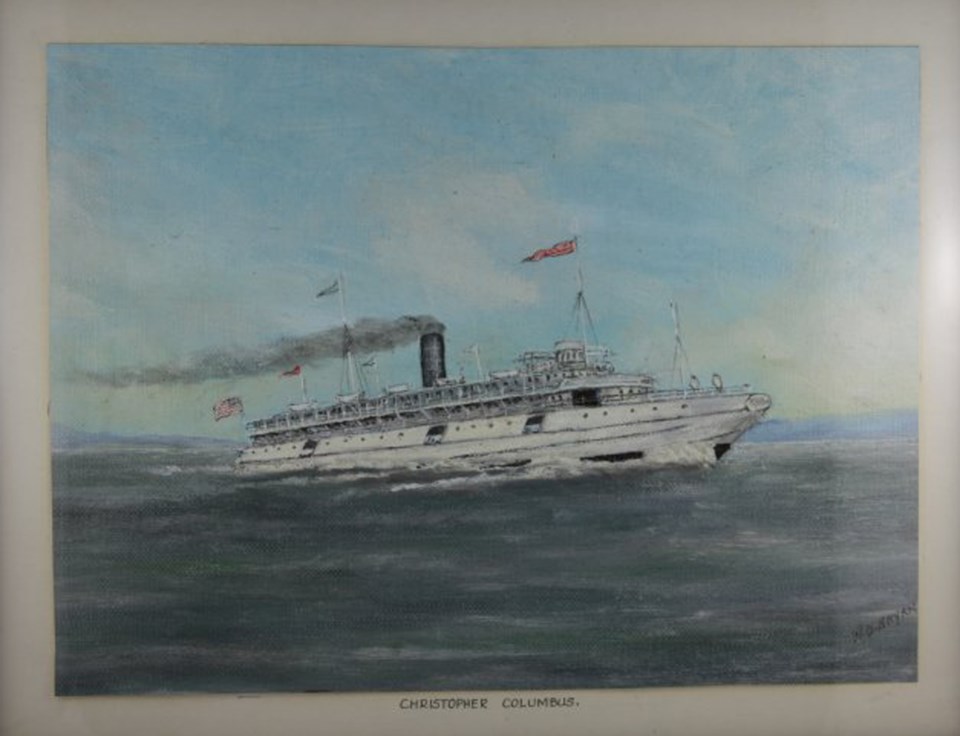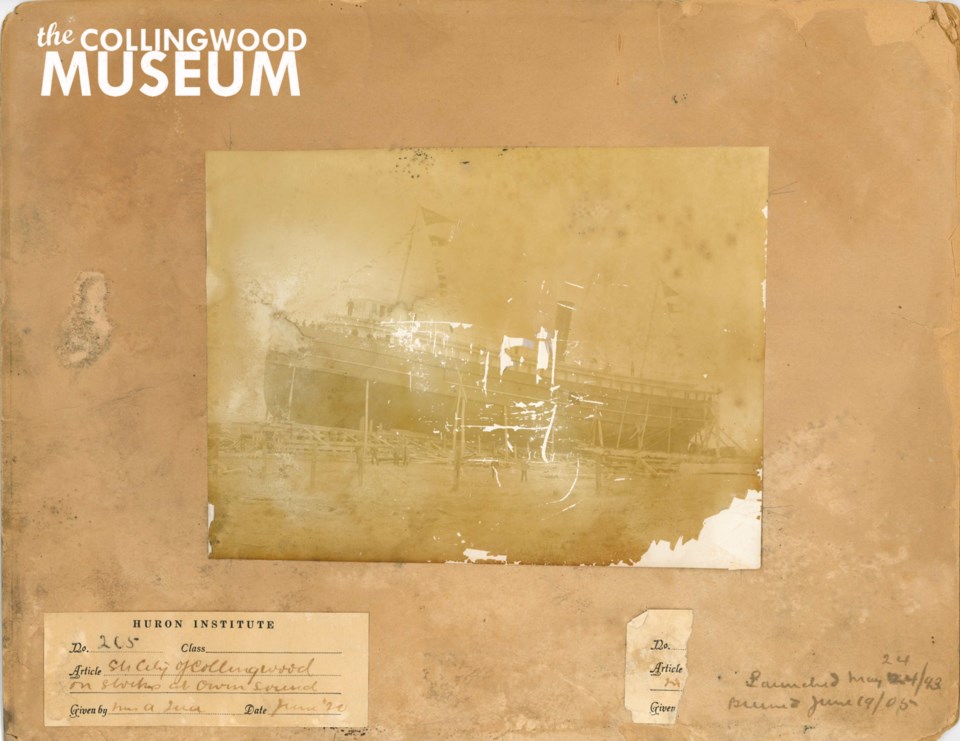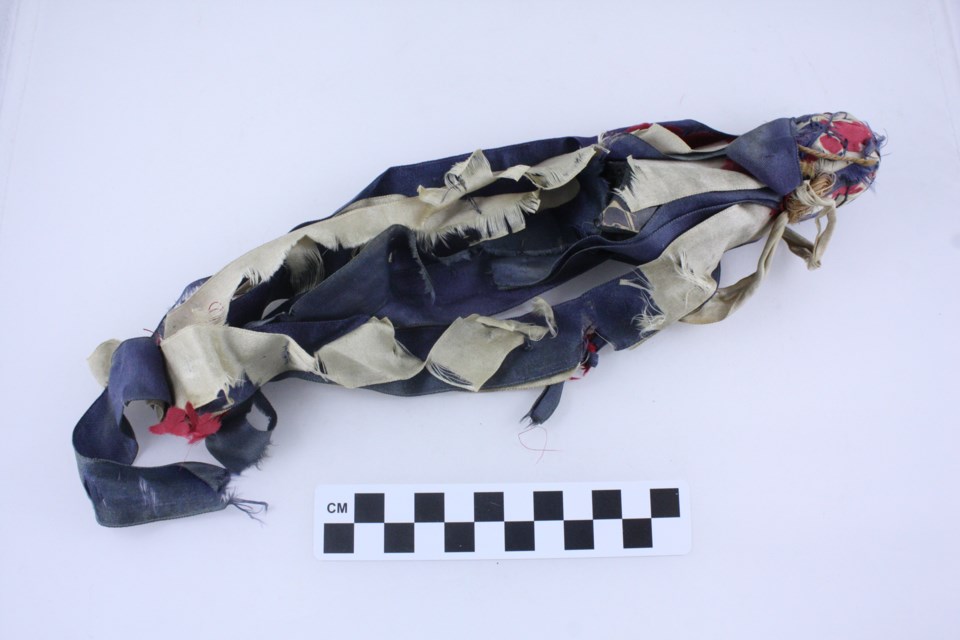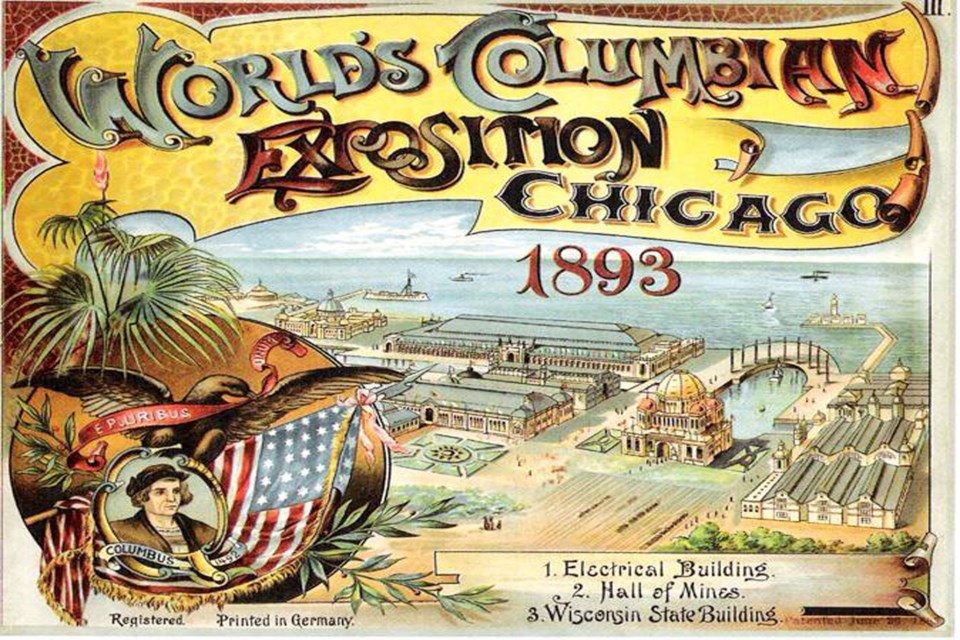This ongoing series showcases historic photos in the Collingwood Museum collection, with research and writing by Melissa Shaw, the museum supervisor.
Collingwood has at least two marine connections to the Chicago Word’s Fair in 1893.
The first involves a captain named Alexander McDougall, and the other a wooden ship named the City of Collingwood.
Alexander McDougall’s name may not be as well-known as the names of others connected to local shipbuilding, but his role in the evolution of ship construction in Collingwood is undisputed.
As a youth, McDougall immigrated to Nottawa from Scotland with his family. During the summer of 1861, he worked as a deckhand aboard a vessel named Edith that operated between Collingwood and Chicago. This position led to subsequent employment as a wheelsman, porter, second mate, mate, pilot, and captain.
He would also go on to supervise ship construction and design a new style of cargo ship known as the whaleback. This new design featured a rounded top to prevent water from staying on board, and an elevated bow and stern. Some accounts compare the design to a cigar with ends that bend upwards.
While this new design wouldn’t be constructed in Collingwood, whalebacks visited our local harbour over the years. McDougall himself would become a driving force in Collingwood, advocating for the transition from wood to steel shipbuilding at the turn of the 20th century.

The whaleback Christopher Columbus was constructed in Superior, Wisconsin, and was launched on December 3, 1892, by the American Steel Barge Company. It was designed as a day boat and entered service in the Spring of 1893 as a ferry between downtown Chicago and the grounds of the World’s Fair at Jackson Park.
The unique looking Columbus is reported to have been a secondary highlight of the fair, carrying over two million passengers in its first year of operation. Of the more than 40 whalebacks constructed between 1887 and 1898, Christopher Columbus was the only passenger ferry. Today, the only remaining whaleback ship, S.S. Meteor, operates as a seasonal museum in Superior, Wisconsin.
The wooden steamer City of Collingwood was built in Owen Sound by John Simpson in 1893. This vessel would go on to have a short, but impressive run on the Lakes, operating between Collingwood and various ports until 1905.

Thanks to the foresight of local resident Jennie Qua (nee Basset), artifacts associated with the City of Collingwood’s construction and launch have been preserved.
Jennie’s father, Captain William James Bassett, was the City of Collingwood’s first captain and it may be for this reason that Jennie came to own this very unique photograph of the ship on launch day, as well as the ribbons that decorated the christening bottle.
Both the photograph and ribbons were donated to the Huron Institute 104 years ago from the Basset home at 219 Maple Street.

Like the Christopher Coumbus, the City of Collingwood’s first year of operation revolved around the Chicago World’s Fair.
Leaving from Collingwood (the town), the City of Collingwood plied the Lakes throughout the fair’s six-month operation, which attracted more than 27 million visitors and averaged more than 150,000 visitors per day.
One hopes that Captain Basset was able to disembark and enjoy a few of the fair’s attractions. Or perhaps he was able to view the iconic Ferris Wheel that stunned attendees for the first time.
Captain Basset continued to sail the City of Collingwood under the North Shore Navigation Co. Ltd. as its flagship vessel.
In 1889, the North Shore Navigation Company and Great Northern Transit Company formed the Northern Navigation Company. The City of Collingwood continued to serve under this banner until its destruction by fire in 1905.
Today, a model of the City of Collingwood is featured in the Collingwood Museum’s exhibition gallery.
If you happen to know of any other connections between Collingwood and the 1893 Chicago World’s Fair, please contact Collingwood Museum staff at [email protected].



